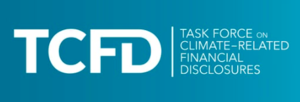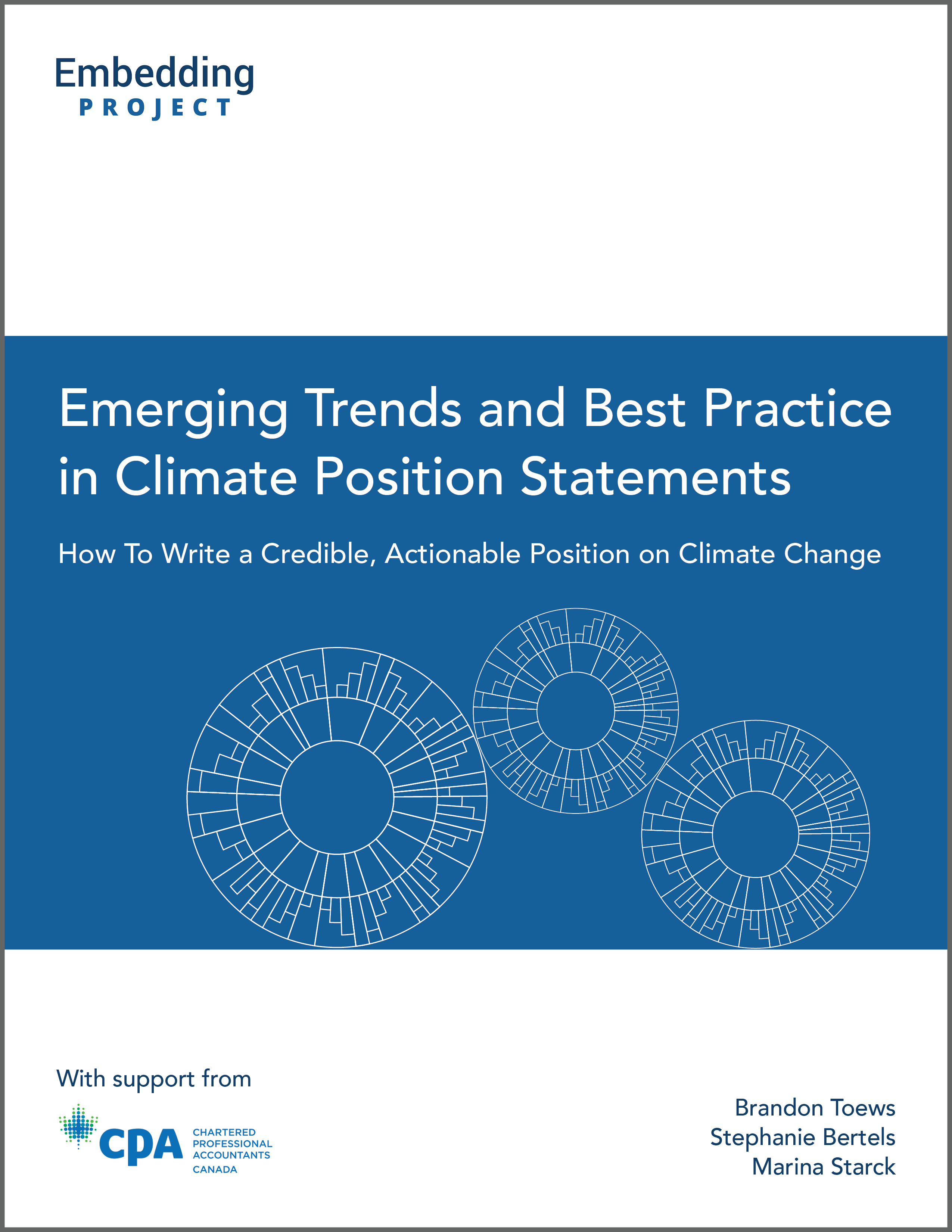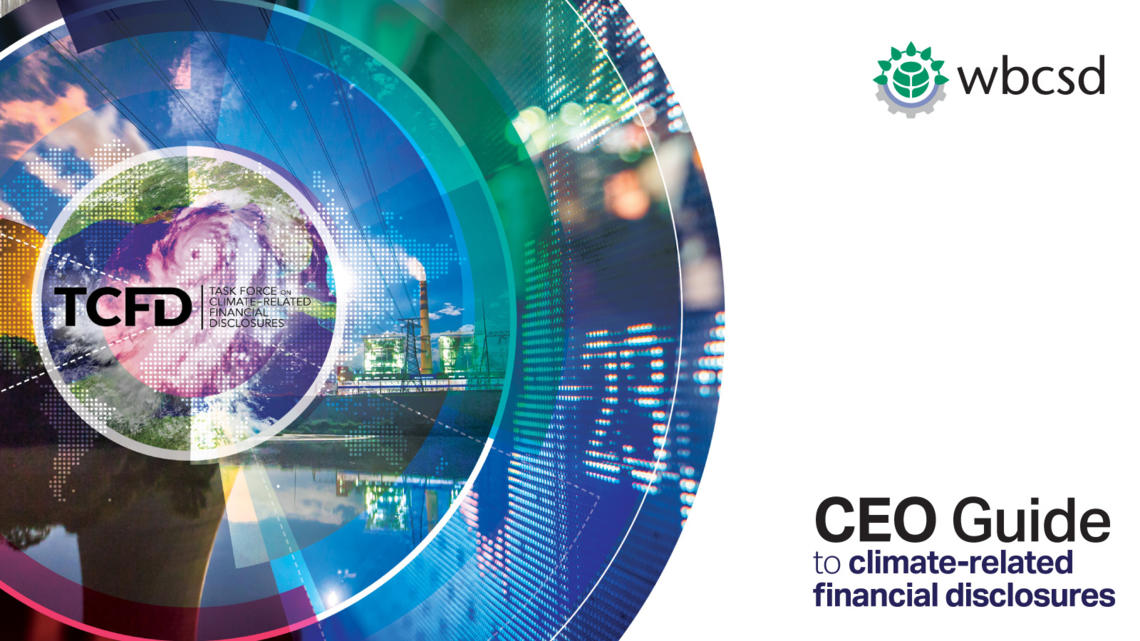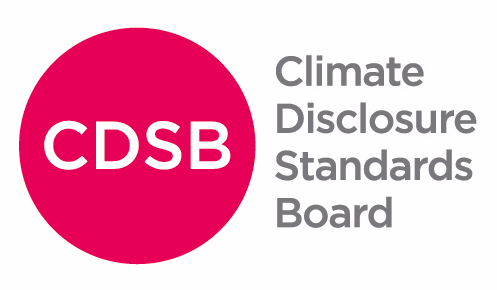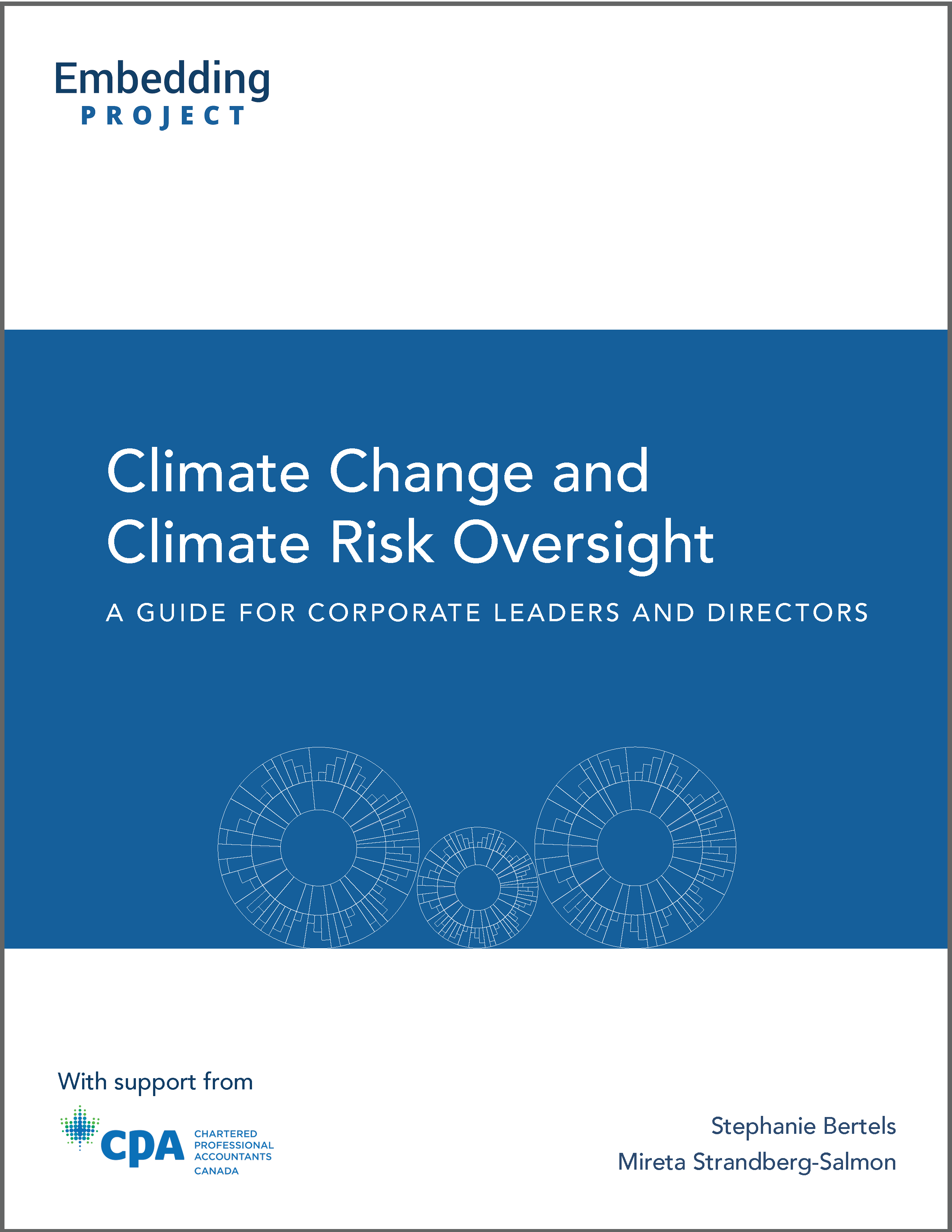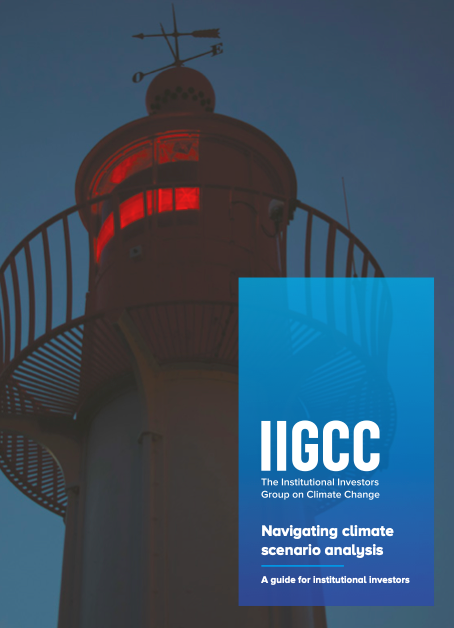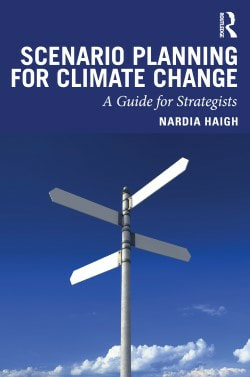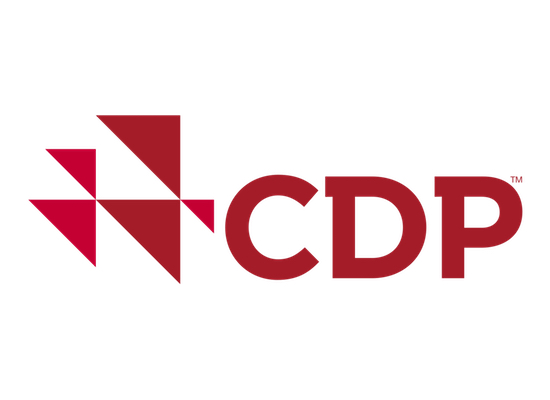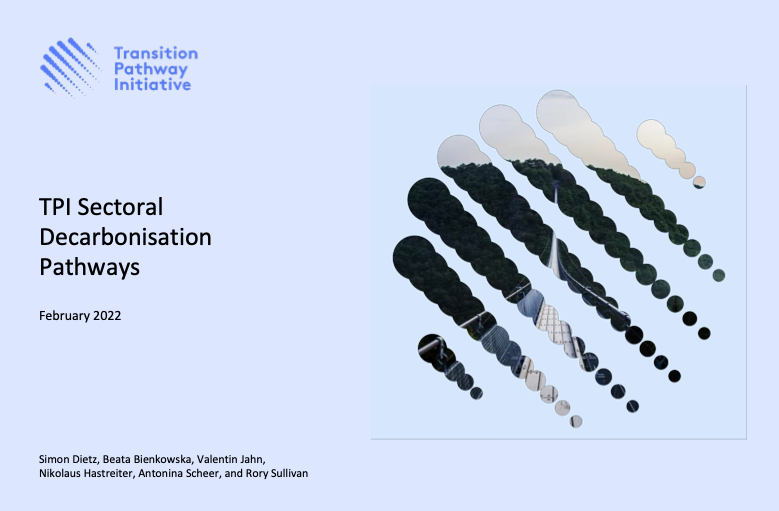Climate Scenario Informed Decision-making
Description
Including understanding the behaviour of the climate system; identifying relevant climate-related risks and opportunities.
Share this Subissue on:LinkedIn
Resources
Disclose and Communicate
The Task Force on Climate-related Financial Disclosures
Momentum is growing for organisations to formally and transparently articulate the risks that climate change poses to the value of their assets and their future profitability. The Task Force on Climate-related Financial Disclosures (TCFD) emerged as a response to this call for action, empowering companies to more effectively measure and evaluate their own risks and those of their suppliers and competitors. The TCFD promoted “consistent, comparable, reliable, clear, and efficient” voluntary climate-related financial disclosures, and has developed comprehensive recommendations and resources in support of this. These resources focus on governance, strategy, risk, metrics, targets, and the use of scenario analysis for evaluating climate-related financial risks and opportunities.
The TCFD has produced a comprehensive Final Recommendations report and several supplemental reports, including a Technical supplement, which provides in-depth information and tools for using scenario analyses to understand the strategic implications of climate-related risks and opportunities to your organisation.
Although these resources remain to be an invaluable source of guidance, the Financial Stability Board (FSB) and IFRS have announced that the TCFD has fulfilled its remit and disbanded, and that monitoring of the progress of corporate climate-related disclosures now rests with the IFRS Foundation's ISSB.
Task Force on Climate-related Financial Disclosures: Guidance on Metrics, Targets, and Transition Plans
The Task Force developed this guidance to complement their flagship report and to help change agents, finance professionals, and leaders to disclose decision-useful metrics, targets, and transition plan information and link such disclosures with estimates of financial impacts.
This guide will help you to select and disclose the right metrics and climate-related targets; understand how aspects of transition plans may be included in climate-related financial disclosures; and understand how climate-related metrics, targets, and information from transition plans provide information that can be used to estimate the impact of climate change on financial performance.
Emerging Trends and Best Practice in Climate Position Statements
Climate change is happening, and the impacts are intensifying. Companies are expected to take a position on climate change and outline an appropriate response. The Embedding Project’s climate position guide helps companies to articulate a concise and transparent board level position on climate change. Drawing on in-depth analyses of over 2,600 climate position statements, this guidebook provides a checklist for crafting a climate position statement with concrete examples from a range of industries and global settings.
CEO Guide to climate-related financial disclosures
Written for an executive audience, the WBCSD's CEO Guide to climate-related financial disclosures is a concise complement to TCFD resources. This summary guide will help bring you up to speed on investor demands for better climate system knowledge among business leaders and for the transparent disclosure of climate-related risks and opportunities.
TCFD Good Practice Handbook
This handbook from the Climate Disclosure Standards Board (CDSB) and the Sustainability Accounting Standards Board (SASB) identifies good practices in implementing the TCFD recommendations. Drawing upon a diverse range of examples, these good practices cover the four core elements of governance, strategy, risk management, and metrics and targets.
Scenario Analysis
Climate Change and Climate Risk Oversight
Climate change is a planetary emergency that presents severe risks to businesses, society, and the global economy. No business, regardless of the sector, is immune – and businesses around the world have a key role to play to help avoid the worst impacts. This guide will help you understand the science behind climate change, why climate change matters to your business, and what actions your business can take to accelerate the transition to a net-zero, climate-resilient future.
Navigating climate scenario analysis: A guide for institutional investors
A key recommendation of the TCFD is for organisations to conduct scenario analyses to understand the risks and opportunities of possible climate futures, but many companies struggle with developing such scenarios. This 'how-to' guide from the Institutional Investors Group on Climate Change (IIGCC) builds on existing reports and research and will help you to create credible climate change-related scenarios. It introduces a five-step framework for understanding and using scenario analysis, and includes instructions for identifying scenario analysis objectives; understanding and selecting scenarios based on available criteria; applying scenario analysis to investments; and taking appropriate action upon review.
Climate Scenario Analysis Reference Approach
This resource from the World Business Council for Sustainable Development (WBCSD) and the Energy Forum was created to provide a common and transparent approach to the use of climate scenarios. The report describes the context and basis for the Reference Approach, and outlines the Energy Forum's rationale, principles, process, and reflections in regards to scenario analysis. This report is also accompanied with an online platform, which collates a broad range of scenarios and variables (e.g. investment, demand, emissions, capacity, etc.) and provides analysis.
Although designed with the energy sector in mind, these resources may be of help to sustainability professionals in any industry.
Scenario Planning for Climate Change: A Guide for Strategists
This book from Nardia Haigh takes a deep dive into climate change-related scenario planning and provides a framework that can help decision-makers develop a climate change strategy. The book builds on a range of rigorously tested scenario planning frameworks and provides a practical, four-step method for developing a scenario planning project. It also includes summaries of common climate change trends.
Her website also offers complementary videos, climate driver summaries, a sample scenario planning project proposal, and various worksheets to help you get started.
How to Conduct Effective Scenario Planning: An Interview with Dr. Nardia Haigh
Scenario planning is a tool for companies to prepare for the unpredictable impacts of sustainability issues. In this blog, we interview Dr. Nardia Haigh to learn more about how to conduct effective scenario planning.
Scenario Planning Made Simple: An 8-Step Method
Scenario planning is an effective strategic tool for decision-makers, but it can be challenging to know where to begin. In this blog, we break down Dr. Nardia Haigh’s scenario planning framework into eight straight-forward steps.
Push It to the Limit: Scenario Planning That Takes Sustainability Seriously
Scenario planning can be an effective strategic process for understanding risks and opportunities, but what about your company’s impacts on society and the environment? In this blog, we provide five recommendations to help create scenarios in which your company supports sustainable futures by operating within the limits of key systems.
The 2030 Calculator
Performing a lifecycle assessment can be a complex, time-consuming, and costly procedure. The 2030 Calculator from Doconomy tries to simplify this process to give companies a better understanding of their full environmental impact - quickly, and at no cost. Although this tool cannot fully replace a detailed analysis, the 2030 Calculator will help to immediately improve the impact transparency of your products and services.
3 common pitfalls of using scenario analysis – and how to avoid them
Climate-related scenario analysis is one of the best available tools for navigating an increasingly unknowable future, and yet common pitfalls are limiting its potential benefits to companies. This article from the CDP highlights three simple recommendations that will help you to make the most of scenario analysis: using a range of distinct and realistic scenarios; selecting the right scenarios for your organisation; and transparently reporting the results.
Hamburg Climate Futures Outlook
Not all climate scenarios are plausible. The Hamburg Climate Futures Outlook provides a systematic assessment of the the plausibility of a climate future in which the Paris Agreement temperature goals are achieved. It applies a plausibility framework that analyzes ten dominant social drivers of decarbonization and six select physical processes of public interest. In so doing, this resource provides key findings and data that can help you to better understand the credibility of decarbonisation opportunities and outcomes, and to better prioritise the allocation of effort and resources for addressing climate change.
TPI Sectoral Decarbonisation Pathways
The Transition Pathway Initiative has created sectoral decarbonisation pathways to help investors assess whether companies in the energy, transport, and industrials sectors are delivering the emissions reductions demanded by climate science within a suitable time period. The pathways are based on scenarios from the International Energy Agency’s (IEA), and will help you to see whether the goals of companies in these sectors are aligned with the actions required and to benchmark accordingly.
Scenarios for Assessing Climate-Related Risks: New Short-Term Scenario Narratives
This report - and the accompanying visualisation tool - were created by UNEP Financial Initiative's Risk Centre to bridge the gap in short-term scenarios that explore near-term climate-related risks, economic volatility, and potential systemic vulnerabilities. They identify short-term scenario narratives that can help financial institutions and others understand the implications and drivers of a range of short-term macroeconomic, transition, and physical shocks, such as geopolitical tension, greenflation, climate migration, and extreme weather. These resources will be especially beneficial for asset managers, insurers, bankers, and investors, but would also benefit enterprise risk and sustainability teams.
